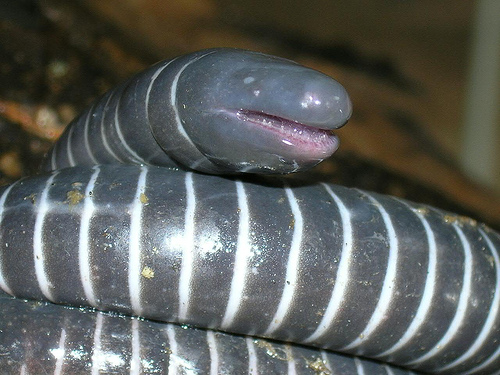The origin, evolution, and developmental basis of limblessness in caecilian amphibians

Dr. Diego San Mauro
Marie Curie Post-Doctoral Researcher at the Natural History Museum, London.
Aula de graus, 16h
Tuesday 31th of January
Tetrapod limbs evolved from sarcopterygian fish fins over 360 million years ago. Several groups of tetrapods have secondarily reduced their limbs to varying degrees, ranging from moderate size reductions to complete loss. Far from being an isolated event in tetrapod evolution, limblessness evolved independently from limbed antecedents in multiple reptile and amphibian groups, always tightly correlated with body elongation (Wolterstoff's law). In amphibians, we find limb reduction in several salamander lineages, and complete limb and girdle absence in caecilians (Gymnophiona). In this seminar, I will present an ongoing research that my collaborators and I are carrying out for studying the genetic and developmental basis that may underpin limb loss in caecilian amphibians. I have reconstructed a timescale for the origin of extant amphibians as well as a robust phylogenetic framework of caecilian evolution necessary to establish the tempo of caecilian limblessness. Through a thorough reconstruction of the genetic network of limb development in vertebrates, we have identified candidate genes to test several causal hypotheses about the evolution of limb loss in caecilians. Amplifying and cloning specific probes for such candidate genes will allow visualizing their comparative expression in embryos of one representative of each of the three amphibian orders. I will present preliminary results of the characterization of one of the candidate genes, Fgf8 (one of the earliest markers of the limb bud), and how these results can bring us one step closer to understanding the genetic developmental mechanisms underlying limb loss in caecilians, and ultimately in tetrapods.
Marie Curie Post-Doctoral Researcher at the Natural History Museum, London.
Aula de graus, 16h
Tuesday 31th of January
Tetrapod limbs evolved from sarcopterygian fish fins over 360 million years ago. Several groups of tetrapods have secondarily reduced their limbs to varying degrees, ranging from moderate size reductions to complete loss. Far from being an isolated event in tetrapod evolution, limblessness evolved independently from limbed antecedents in multiple reptile and amphibian groups, always tightly correlated with body elongation (Wolterstoff's law). In amphibians, we find limb reduction in several salamander lineages, and complete limb and girdle absence in caecilians (Gymnophiona). In this seminar, I will present an ongoing research that my collaborators and I are carrying out for studying the genetic and developmental basis that may underpin limb loss in caecilian amphibians. I have reconstructed a timescale for the origin of extant amphibians as well as a robust phylogenetic framework of caecilian evolution necessary to establish the tempo of caecilian limblessness. Through a thorough reconstruction of the genetic network of limb development in vertebrates, we have identified candidate genes to test several causal hypotheses about the evolution of limb loss in caecilians. Amplifying and cloning specific probes for such candidate genes will allow visualizing their comparative expression in embryos of one representative of each of the three amphibian orders. I will present preliminary results of the characterization of one of the candidate genes, Fgf8 (one of the earliest markers of the limb bud), and how these results can bring us one step closer to understanding the genetic developmental mechanisms underlying limb loss in caecilians, and ultimately in tetrapods.